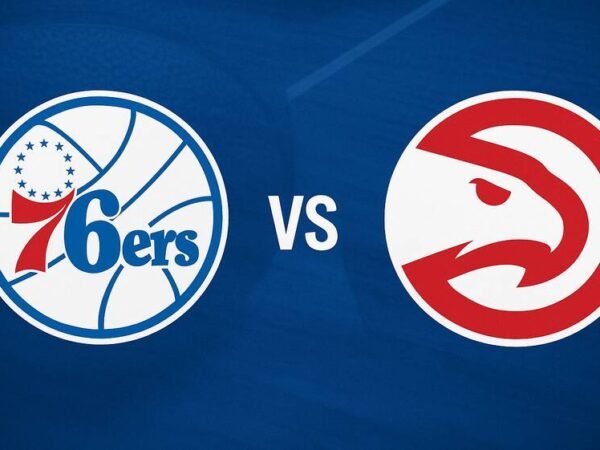The matchup between the Golden State Warriors and Utah Jazz has always been a fascinating contest in the NBA, bringing together two teams with distinct styles and a rich history of competitive games. The most recent encounter between these two teams was no exception, offering a thrilling display of skill, strategy, and individual brilliance. This article delves into the “Golden State Warriors vs Utah Jazz match player stats,” breaking down the key performances, team dynamics, and statistical highlights that defined this high-octane NBA showdown.
Introduction
The clash between the Golden State Warriors and the Utah Jazz is more than just another game on the NBA calendar; it is a battle of contrasting philosophies. On one side, the Warriors, known for their fast-paced offense and three-point shooting, rely heavily on the skills of their superstar players, particularly Stephen Curry and Klay Thompson. On the other side, the Utah Jazz, a team built around disciplined defense and balanced scoring, often look to outwork their opponents on both ends of the floor.
In this particular game, both teams entered with significant stakes. The Warriors were keen to maintain their momentum in the Western Conference, while the Jazz aimed to establish themselves as legitimate contenders. The stage was set for an exciting matchup with both teams relatively healthy and their star players in form.
Team Performance Breakdown
Scoring and Shooting Efficiency
When analyzing the “Golden State Warriors vs. Utah Jazz match player stats,” scoring and shooting efficiency are crucial metrics. The Warriors outscored the Jazz with a final score of 118-110, showcasing their superior offensive execution. The Warriors shot 53.3% from the field, connecting on 49 of their 92 attempts. This efficiency was even more pronounced from beyond the arc, where they hit 14 of their 35 attempts, a 40% success rate.
While competitive, the Jazz couldn’t quite match the Warriors’ shooting precision. They ended the game with a 47% field goal percentage, making 39 out of 83 attempts. Interestingly, the Jazz were slightly better from three-point range, hitting 15 out of 35 shots, giving them a 42.9% success rate. However, their inability to consistently convert from inside the arc proved costly.
Rebounding and Assists
Rebounding was another area where the Warriors dominated, and it played a significant role in their victory. The Warriors grabbed 47 total rebounds, compared to just 29 by the Jazz. This rebounding advantage was crucial, as it allowed the Warriors to generate more second-chance points and control the game’s tempo.
Regarding playmaking, the Warriors again outperformed the Jazz, recording 32 assists to the Jazz’s 21. This disparity highlights the Warriors’ ability to move the ball effectively and find open shooters, a hallmark of their offensive strategy. Despite their best efforts, the Jazz struggled to match this level of ball movement, often relying on individual brilliance rather than cohesive team play.
Individual Player Highlights
Golden State Warriors
Stephen Curry: As expected, Stephen Curry was at the heart of the Warriors’ success. Curry finished the game with 25 points, ten assists, and six rebounds, showcasing his all-around game. His shooting was crucial, particularly from three-point range, where he made 7 out of 16 attempts. Curry’s ability to stretch the floor and create space for his teammates was instrumental in breaking down the Jazz’s defense.
Klay Thompson: Klay Thompson, often overshadowed by Curry, had a stellar game. Thompson led all scorers with 32 points, hitting 12 of his 23 shots from the field, including 6 of 13 from beyond the arc. His defensive contributions were also noteworthy, as he played a key role in limiting the Jazz’s perimeter scoring.
Jonathan Kuminga: Jonathan Kuminga provided a significant boost off the bench, particularly in the rebounding department. Kuminga pulled down ten rebounds and added 21 points on an efficient 9-of-11 shooting. His energy and athleticism were crucial in maintaining the Warriors’ momentum.
Utah Jazz
Jordan Clarkson: For the Jazz, Jordan Clarkson was one of the standout performers, finishing with 22 points and four rebounds. Clarkson’s ability to score from various spots on the floor kept the Jazz in the game, especially during key stretches when the Warriors threatened to pull away.
Collin Sexton: Collin Sexton also had a notable performance, contributing 15 points and seven assists. Sexton’s playmaking was a bright spot for the Jazz, as he continually tried to involve his teammates and keep the offense flowing. However, his shooting efficiency left room for improvement, as he made only 5 of his 15 field goal attempts.
Lauri Markkanen: Lauri Markkanen chipped in with 19 points and five rebounds, showing his versatility as a scorer. However, Markkanen struggled to impose himself in the game’s latter stages as the Warriors’ defense tightened.
Defensive Performance Analysis
Defense was a key factor in this game, particularly for the Warriors, who managed to stifle the Jazz’s offense at critical moments. The Warriors recorded 9 steals and 8nineblocks, compared to the Jazz’s 4 steals and six four blocks. These defensive stats underscore the Warriors’ ability to disrupt the Jazz’s rhythm, particularly in the second half when they tightened their defensive rotations.
The Warriors’ defense was particularly effective in forcing turnovers, as the Jazz committed 13 turnovers compared to the Warriors’ 11. These extra possessions allowed the Warriors to maintain their lead and secure the win.
Key Turning Points in the Game
They have swung the momentum in several key moments in the game in favor of the Warriors. One such moment came late in the third quarter when Klay Thompson hit back-to-back three-pointers to extend the Warriors’ lead to double digits. This sequence energized the Warriors and deflated the Jazz, who struggled to respond.
Another turning point was the Warriors’ defensive stand early in the fourth quarter. With the Jazz attempting to mount a comeback, the Warriors’ defense forced a series of missed shots and turnovers, allowing them to maintain their lead and control the game’s pace.
The contributions of bench players like Jonathan Kuminga and Trayce Jackson-Davis played a significant role in the Warriors’ victory. Their ability to step up when the starters were resting helped the Warriors keep the pressure on the Jazz throughout the game.
Statistical Comparison by Quarters
A detailed look at the “Golden State Warriors vs Utah Jazz match player stats” by quarters reveals the ebb and flow of the game. The Warriors were strong in the first quarter, outscoring the Jazz 41-28. This early lead was crucial, allowing the Warriors to dictate the tempo for the rest of the game.
The Jazz narrowed the gap in the second quarter, but the Warriors still held a comfortable 68-54 lead at halftime. The third quarter saw the Warriors maintain their lead, despite the azz’s best efforts to claw their way back into the game. By the time the fourth quarter rolled around, the Warriors had built a lead that the Jazz ultimately could, despite a late scoring surge.
Conclusion
The Golden State Warriors’ victory over the Utah Jazz was a testament to their superior shooting, rebounding, and overall team play. The “Golden State Warriors vs. Utah Jazz, match player stats” highlight the Warriors’ ability to execute their game plan effectively, offensively and defensively. Key performances from players like Stephen Curry, Klay Thompson, and Jonathan Kuminga ensured that the Warriors stayed ahead throughout the game.
Despite strong individual performances from players like Jordan Clarkson and Collin Sexton, the Utah Jazz ultimately fell short in several key areas, including rebounding and playmaking. The Jazz will need to address these issues if they hope to compete with the top teams in the Western Conference.
In conclusion, this game served as a reminder of the Warriors’ championship pedigree and the work that the Jazz still need to do to reach that level. As both teams move forward in the season, this game will undoubtedly serve as a learning experience and a benchmark for future matchups.












